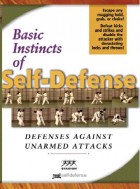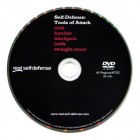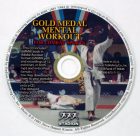Question: I was reading your remarks on the knockdown karate and it’s effectiveness. Do you consider “Olympic” or WTF TaeKwonDo a form of knockdown Karate on par with Enshin, Kyokushin or San Da? I am not trying to start a controversy, I am only interested in your opinion. I have bought several of your videos and books and [am] a big fan.
Sincerely,
Peter
Answer: WTF Taekwondo is definitely knockdown — watch matches and see people knocked down or out. I have seen one knockout when a fighter at a World WTF Championship got his neck broken.
Which fighter would win in a fight in which all sports-legal striking and grappling techniques are permitted?
Concerning effectiveness as a fighting art — that is in self-defense or in a mixed martial arts/NHB match — that is a different story.
On one hand, in every encounter it all depends on particular fighters — how well they do what they do and how well they take advantage of circumstances. A long, long time ago someone had asked a group of Russian coaches of various combat sports (boxing, judo, sambo, wrestling), which sport’s fighter would most likely win under open rules (all sports-legal striking and grappling techniques permitted). The coaches answered that the winner would be the fighter who first successfully applies his tactics. (Tactics are ways of successfully applying techniques. Techniques are actions that score in a match.)
On the other hand — the way you train sets your habits. If your sport or martial art has rules encouraging behavior unlikely to be useful in natural fighting, then you will be at a disadvantage in a no-rules fight.
Generally, rules of combat sports and martial arts are designed so to preserve as much combat effectiveness as it is safe for training and competition. So, for example, boxers, (and kickboxers) do not wrestle because the boxing gloves, necessary for boxers’ safety, make wrestling, well, very difficult. Wrestlers do not box because, for safety, they would have to wear boxing gloves. Yet, getting into an argument with either a well-trained boxer or wrestler is bloody risky for anyone. This is because boxers and kickboxers train to strike all targets (boxers — only above the belt) from all distances and to avoid attacks from all distances. Wrestlers (free-style, judo, sambo) grab from head to toe, work from a distance of no touch to a full clinch, and have to deal with opponents’ handwork that is nearly as fast as boxer’s punches.
But enough of examples from boxing and wrestling. I hope they made you think . . . Knockdown karate rules permit striking nearly everywhere except groin and knee (some styles exclude punches to the head), with most striking tools (elbows usually excluded), sweeping, and in some styles, grabbing and throwing. That is, most of the things that can be done to you in a fight (in an unarmed fight that is).
The rules of WTF taekwondo, however, look like they were designed not with the utmost concern for combat effectiveness but to make taekwondo look different from karate.
So if self-defense effectiveness is what you want, then a good choice would be an art or sport that permits most of the real-life techniques (like KO karate or Sanshou), or permits most of the attacks and defenses with one set of weapons, such as hands, and a full range of distances (like boxing or wrestling).
Ultimately, it all depends on how good you are at what you do, but being systematically exposed to the widest range of possible actions will surely help.
Self-defense tip from Thomas Kurz, co-author of Basic Instincts of Self-Defense and author of Science of Sports Training, Stretching Scientifically, and Flexibility Express.
Self-Defense Moves
For your defense moves to work under stress they must be based on your natural, instinctive reactions, require little strength and limited range of motion, and be proven in fighting experience.To learn how your natural reactions can instantly defeat any unarmed attack, see the video Basic Instincts of Self-Defense.
Defend Against Weapons
To defend against weapons you have to know how they are used. Also — every stick has two ends … the weapon of attack may become a weapon of defense in your hand …To learn how the typical street weapons (club, knife, razor) are used by an experienced streetfighter and how to practice with them, see the video Self-Defense: Tools of Attack — Club, Hatchet, Blackjack, Knife, Straight Razor.
Mental Toughness
Staying cool under pressure is more important for self-defense than being physically fit and technically skilled. If you can’t control your mind what can you control?To learn mental techniques that let you calmly face any threat and act rationally in the heat of a fight, click here.
For a complete list of our products, click here.







